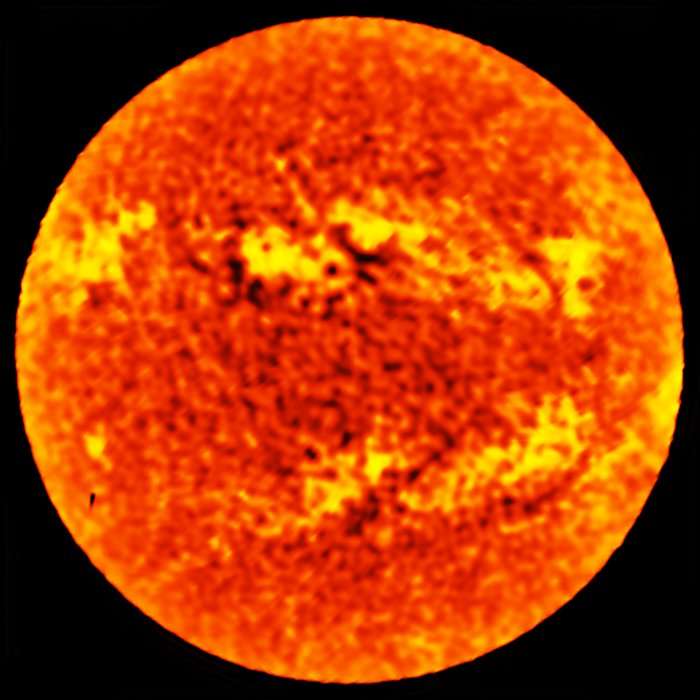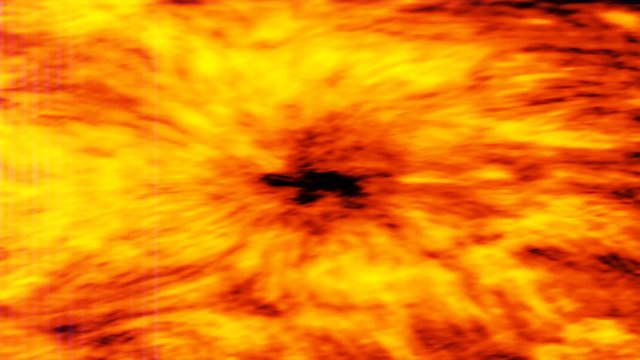Here comes the Sun, in all its terrifying glory.
Image credit: ALMA (ESO/NAOJ/NRAO)
New up-close-and-personal shots from the Atacama Large Millimetre/Submillimeter Array (ALMA) in Chile reveal a very large sunspot that looks remarkably like the Eye of Sauron. According to the European Southern Observatory (ESO), ALMA used radio interferometry to create the images, meaning it used antennas to receive radio waves from the Sun.
Sunspots are oases of (relative) coolness on the Sun’s visible surface, called the photosphere. While sunspots are often pretty large, this one captured by ALMA could fit roughly two Earths in it. It’s a monster.

Image credit: ALMA (ESO/NAOJ/NRAO)
It’s also rather pretty, in a chaotic way.

Image credit: ALMA (ESO/NAOJ/NRAO)
The ESO is particularly interested in using ALMA to study the layer above the sun’s photosphere, called the chromosphere. “The images reveal differences in temperature between parts of the Sun’s chromosphere,” the ESO said in a press release. “Understanding the heating and dynamics of the chromosphere are key areas of research that will be addressed in the future using ALMA.”
Sure, the Sun looks like the bottom of a Doritos bag. But it’s literally why we’re here, so show some respect.
